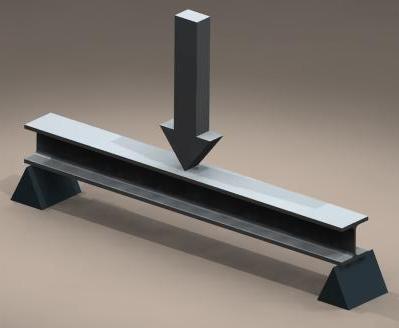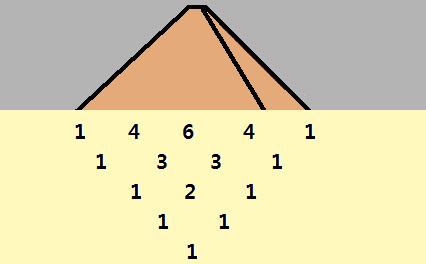Shadow Behind the Pascal's Triangle
1. Shadows in the EP-Calculation
The term "shadow" used in the calculation means an invisible value created from the real one. The value can be brought out by exposing the shadow using EP-Calculation. Albert Einstein brought this possibility to light with his theory of relativity and summarized the following equation.
E = m c2
The momentum p is transformed in the Lorenz transformation by a factor
1/L when L = sqrt (1-( v/c )2)
==> time dilation 1.0328 when the speed of light 0,25 c
1d x 2d x time dilation = 1.618
1.25 x 1.25 x 1.0328 = 1.618
1d x 2d x 3d x time dilation = 2
1.25 x 1.25 x 1.25 x 1.0328 = 2
1d = one-dimensional diameter
2d = two-dimensional cross-section
3d = Three-dimensional object
We live in a three-dimensional world, so the row factor of Pascal's triangle
1.1 = 1.03283 = 1.1
2. Pascal's Triangle Behind It All
We can peek behind Pascal's triangle with the help of Visual Geometry and a calculator. Pascal's triangle is logical up to the fifth line, but not after that. The fifth line is the limit of relativity in phenomena, so Pascal's triangle is logical in this sense as well. The calculator gives for the sixth row the value 1.1 x 1.4641 = 1.61051. The sixth row corresponds to the Golden Ratio 1.61(8), the meaning of which phenomena is left up to the EP-Calculation. Let's make a calculation where the supporter's length increases by 1.1 times to a relative length of 1.4641. Both starting rows are darkened in bold in the triangles ( HEB 100, and Pascal's triangle).
1.1 x 758 cm =834 cm
1.1 x 834 cm = 918 cm
3. Load 1 kN
In the calculation, the load is 1 kN, or about 100 kg, which corresponds to the weight of a slightly heavier person. 102 kg to be exact, but are the calculations that accurate in practical values? After this the phenomena can cross-calculate with steel and physiology. After this, the phenomena can be cross-calculated with steel and physiology, because the calculation principle is a ratio calculation, which means the same. After learning the principle, loads and spans can be anything. That's why not only strength or deflection is calculated, but all kinds of phenomena cross-checked. In Book I, The End of the Maya Calendar, I tell how scientists calculate phenomena with their methods without seeing the whole as derived from the Big Bang. In addition to this, many other calculations will be detailed in my books.

||
|| Forcce 1 kN
\ /
=======================
/\ /\
Deflection of the concentrated force (= load)
4. Calculation
4.1 There are formulas for calculating girder deflections. Before you calculate the total deflection of the girder from the load and its own weight, this takes time. Therefore, the weight of the girder is often left out of the calculations. As a mistake, this can backfire expensively in certain cases.
4.2 The EP-Calculation needs formulas secured, taking into account the deflection from the load and the weight of the girder, but in verified calculations, formulas are not necessarily needed later to reach the final result. The EP-calculation takes into account the deflection of the load and the weight of the girder, which is an advanced way to calculate.
4.3 The easiest way to calculate the deflection is to click on the photo above, and you will add the necessary information to the Excel spreadsheet. This is how you calculate the triangles below. The calculation takes into account only the deflection caused by the load.
Length Pascal's Triangle Deflection
HEB 100 -1 1
HEB 100 -1.1 1 1
HEB 100 -1.21 1 2 1
HEB 100 -1.331 1 3 3 1 (factor 1.331)
HEB 100 -1.4641 1 4 6 4 1
HEB 100 -1.61051 1 6 1 0 5 1
HEB 100 - 1.771561 1 7 7 1 5 6 1 1.7367 cm/1.3048 cm = 1.331
918 cm ==================== 1.7367 cm 1.331 jne. - etc.
834 cm ================= 1.3048 cm 1.331
758 cm ============== 0.9803 cm 1.331
689 cm ============ 0.7366 cm 1.331
627 cm ========= 0.5534 cm 1.331
570 cm ======= 0.4158 cm 1.331 x 0.3124 = 0.4158
518 cm === 0,3124 cm -
1.1 Factors 1.331

Pascal's Triangle as a pyramid cast a shadow on a row values, which can use to calculate the deflection of the girder, but also other things. This is something that you have probably never done.

21.6.2018*08:00 (1143 - 762)
www.karikolehmainen.com
epcalculation@gmail.com
Eng 28.8.22' |